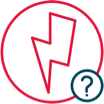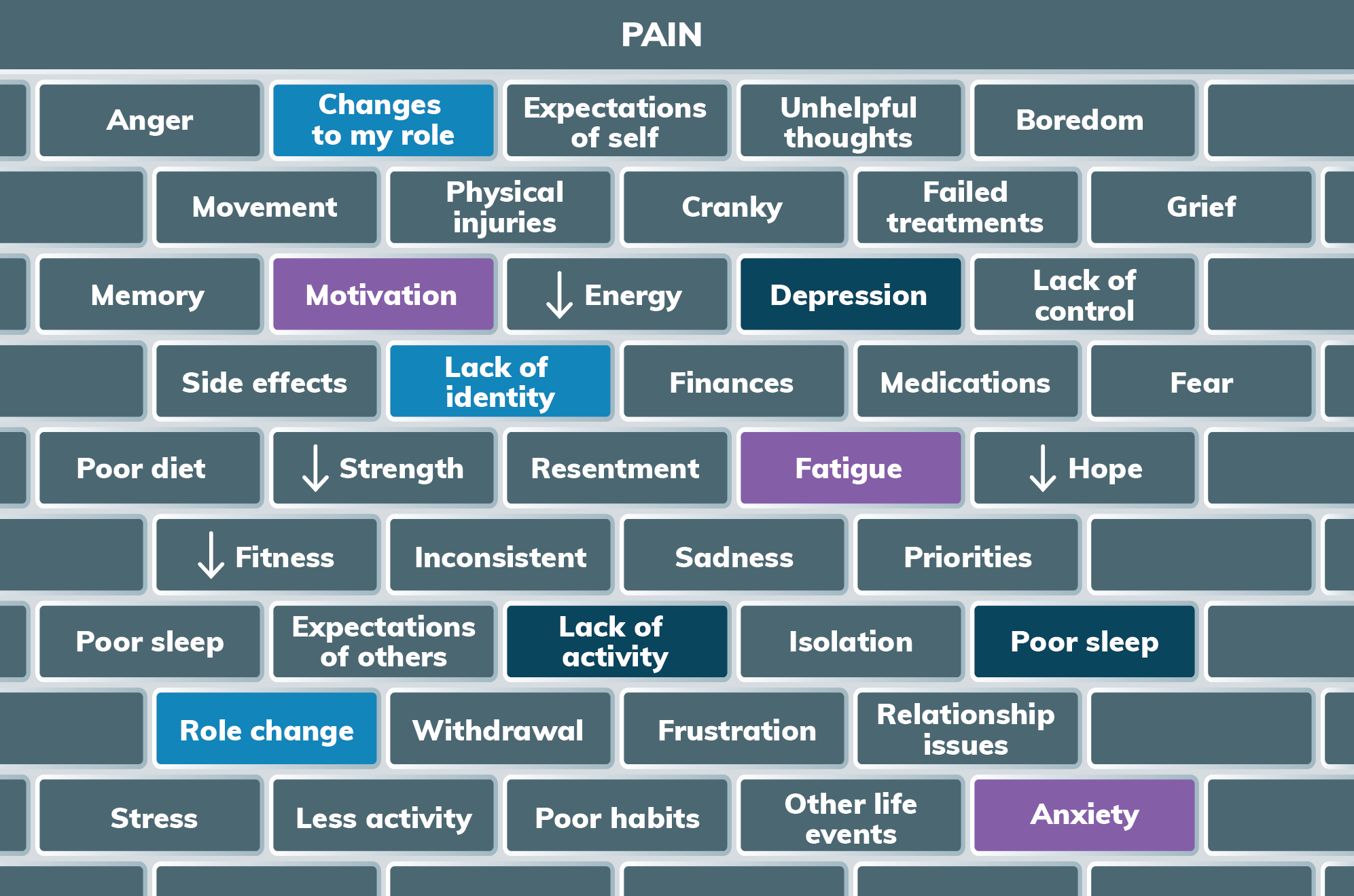
What is pain?
Pain is an important warning sign for the body, but when pain continues after the body is healed or for an unknown reason, this is called chronic pain. This pain is real and there are many ways to help manage it.
For such a small word, pain, is very complicated and can mean different things to different people. Unfortunately, chronic pain is common after a brain injury. The pain could be left over from injuries from an accident or a fall, or it could be because the body is now moving in a different way. It could even be for unknown reasons. Even if you do not know the reason for your pain, your pain is real and there are lots of ways to help manage it better.
Types of pain
Pain is one of your most important body systems because it is a warning sign when there is something wrong or you have an injury to your body (pain = harm). This is called acute pain and it usually lasts for short time while the body is healing.
Sometimes the pain system stops working properly and the pain continues after your body has stopped healing. This is called chronic pain and it can last for months and even years. When this happens, pain is no longer a warning sign of danger or that something is wrong in your body. This pain does not mean that there is more harm to your body (pain does not mean harm).
Remember, for acute pain
Pain = Harm to your body
For chronic pain
Pain ≠ Harm to your body
So why am I still in pain?
You might ask yourself this question a lot. There are lots of different ideas about why this is the case. Some people think, ‘I have pain, there must be something wrong in my body – maybe I should see another doctor or have another scan’ or ‘Maybe the doctors have missed something and I still have something wrong with me’. When you have had pain for a long time and you have been assessed by doctors, often is it not something in your body that can be fixed. Usually, it means you have chronic pain. To understand why this is the case, you first need to know a bit more about how the brain works.
Watch this video to find out more about how chronic pain works
To get more information read the What is pain guide.
Your pain gates
One way to help you to turn down the volume on your pain over time is to figure out what things make the pain gates open or close. The things that open your gates are those that make pain worse. The things that close your pain gates are those that make your pain better. Have a look at the My pain gates worksheet to work out what your pain gates are and what you can do to help manage your pain.
The brick wall of pain
Often when you have chronic pain, it can feel like your pain is holding you back from what you want to do and meeting your goals. But if you really focus on it, it is not just your pain that is getting in the way, there are a lot of other issues that are blocking you. Finding out what these are can be the first step in making a way to move past them. Otherwise your goals will keep coming unstuck.
These issues and problems can sometimes all come together, and it will seem like you have a big wall in front of you, blocking you from getting to where you want to be. This can be your hopes, dreams, goals, whatever it is you are wanting your life to be. Sometimes it can feel like you are constantly banging or pushing against this wall to get to your future. Sometimes the wall can look so big and overwhelming that it is impossible to reach or even see what your hopes or dreams look like.
But there is one key thing about the wall, it is a brick wall and is made up of different bricks; smaller parts that come together to create the wall. The first step to breaking through your brick wall is to work out what the bricks are in your wall, that is, identify the problems and barriers in your life. Try filling in the empty bricks with issues that you commonly face – some will be clear and others not. You need to name the bricks first before you can make a plan to break through the brick wall.
 Watch this
Watch this
Watch this video to learn how to complete the brick wall exercise with a client who has chronic pain after a brain injury.
This is an image of a brick wall with barriers included separately in each brick. The bricks are:
- anger
- changes to my role
- expectations of self
- unhelpful thoughts
- boredom
- movement
- physical injuries
- cranky
- failed treatments
- grief
- memory
- motivation
- lower energy
- depression
- lack of control
- side effects
- lack of identity
- finances
- medication
- fear
- poor diet
- reduced strength
- resentment
- fatigue
- reduced hope
- reduced fitness
- inconsistent
- sadness
- priorities
- poor sleep
- expectations of others
- lack of activity
- isolation
- role change
- withdrawal
- frustration
- relationship issues
- stress
- less activity
- poor habits
- other life events
- anxiety
Many of the bricks are common to most people with chronic pain and a brain injury, but it is good to think about what the bricks are in your wall. Use The brick wall of pain worksheet to find out what your bricks are.
Pain thought swaps
When you have pain, it is easy to have unhelpful thoughts that can make your pain worse. It helps to swap these for more helpful thoughts. Read through the Pain thought swap guide to learn more about how to swap your thoughts, and then have a go at the Pain thought swap worksheet and learn to Be Pain Smart.